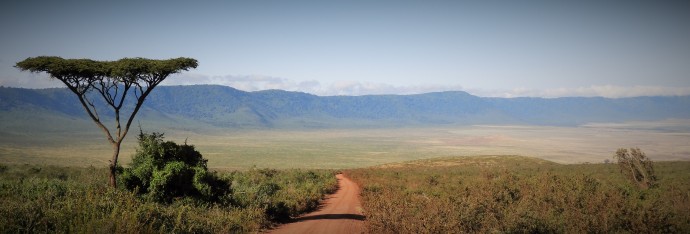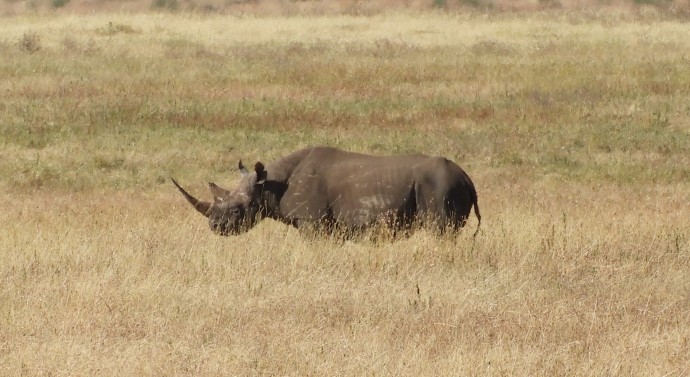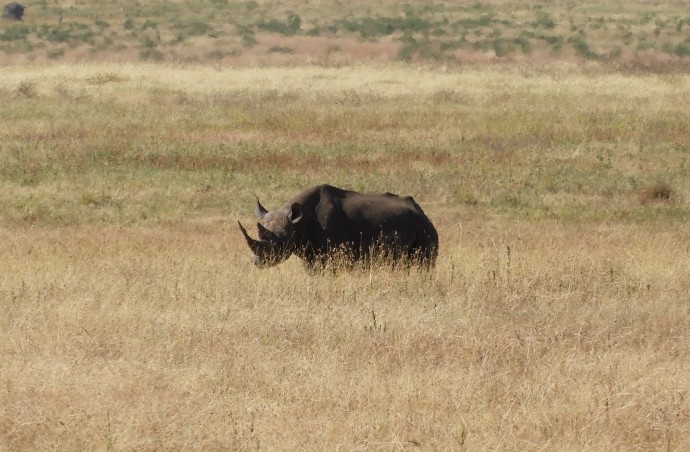 They are known as Africa’s Big Five – Lion. Buffalo. Elephant. Leopard. Rhinoceros. Read any guide book or peruse any tour company website and you’ll almost always see something about the Big Five, once prized by African game hunters and now known as the animals most visitors want – and expect – to see when they go on safari. As you already know, the traveling cows are equal opportunity animal lovers, and so far, this trip has proved itself to be an abundance of riches when it comes to close encounters of the wildlife kind. We have been extremely lucky!
They are known as Africa’s Big Five – Lion. Buffalo. Elephant. Leopard. Rhinoceros. Read any guide book or peruse any tour company website and you’ll almost always see something about the Big Five, once prized by African game hunters and now known as the animals most visitors want – and expect – to see when they go on safari. As you already know, the traveling cows are equal opportunity animal lovers, and so far, this trip has proved itself to be an abundance of riches when it comes to close encounters of the wildlife kind. We have been extremely lucky!

That being said, one member of the Big Five has eluded us – the Rhinoceros. Only six or seven still live in the area of the Serengeti where we were staying, and our guides were honest with us about the low odds of seeing one. Nearly wiped out by poachers for the price of their horns, wild rhinos are rare, and while I have been overwhelmed by the sheer number of incredible animals we have seen so far (and should not look a gift zebra in the mouth – we’ve spotted more creatures than most people do!), a part of me wondered if we might leave Tanzania rhinocerless…
Until today.
Yesterday afternoon, we left our mobile tent camp and traveled, again by safari plane, to Gibbs Farm on the edge of the Ngorongoro Crater in Eastern Tanzania. Named for the sound made by the cattle bells used by the Masai herders (“goron”…“goro”…“goron”…“goro”), the Ngorongoro is a self-contained wildlife refuge located in the crater of an inactive volcano. Unlike the Serengeti, the Crater only has a few roads leading in and out, and entry is highly regulated. All visitors must register with the park office and purchase a permit that gives them access to the Crater from 6:30am until 6:30pm. We spent the majority of today in the Ngorongoro on a game drive.


And the very first animal we got to see was a rhinoceros! He was very far away, but he was there with his tell-tale, double-horned profile and suit of gray, muscular armor. And even though we were not able to get a closer look, he was thrilling to see – Big Five checklist complete.
I wish I could say that the rest of our visit was as noteworthy. But after spending three glorious days out on the Serengeti in an open jeep, practically alone in the vast wilderness and coming within mere inches of some of the world’s most exotic creatures, it was hard to find the Ngorongoro appealing. The convoy of safari jeeps – dozens by my count – kicked up so much dust that the Crater seemed endlessly hazy, and we were not permitted to drive off of the road to get a closer look at anything. It was traffic jams, not skilled trackers, that identified animals’ locations. And while the Serengeti was tranquil, the Crater was…well, touristy. Then again, the Ngorongoro covers just 100 square miles compared to the Serengeti, which spans over 12,000, so I suppose we were bound to run into a few more people! AND there was a flush toilet at our disposal in the Crater compared to the termite mound I utilized on the Savannah. That’s worth something. Trust me!
Any animal sighting is exciting, though, and along with the rhino, we also saw a ton of hippopotamus and stood closer to them than we ever have before now. We even came across a flamboyance of flamingos, which was a delightful surprise (they are my FAVORITE bird!!)

And because most of the Crater animals are desensitized to the presence of human visitors, we were able to get some great close-up shots of zebra, hyena, and everyone’s favorite, the wildebeest (they were all too skittish in the Serengeti to smile for my camera.)
And we enjoyed another meal – lunch this time – overlooking a pod of the Cash Cow’s favorite African animal.
Regardless of what we expected, the Crater and its inhabitants were beautiful, just in a different way than we’ve become accustomed to. But I think we all agree that we are glad we were able to see it in order to have a more well-rounded perspective on the diversity of environments found in Tanzania.
Hakuna Matata!
The Calf





Recent Comments